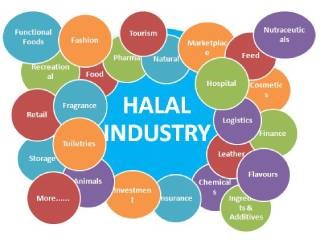UNCATEGORIZED
The Development of Artificial Intelligence in China: Talent creation and comparison with U.S.
Published
2 years agoon
By
Editor
Artificial intelligence in China is facing unprecedented development opportunities and has many advantages in terms of development. Let us make a few considerations in this regard.
1) International trends
Significant progress has been made in the IT environment and the technological level of human society between big data, cloud computing and the Internet, which are closely related to AI and have developed quickly. AI has started to have a significant impact on the structure of human society and the dual human-machine environment is gradually developing into the third human-machine-intelligent machine environment. The cooperation and coexistence of humans, machines and intelligent machines will become the new normal of the social structure. Such harmonious coexistence is hopefully not only a need for social development, but also provides a distinct place for AI.
Throughout the international community, the development trend of science and technology, as well as AI, is an important sign for human society to keep moving forward after entering the IT field at every level, and is the general trend of international scientific and technological development. Recovery and development inject positive energy into China, and this is also a period of unique development opportunities for China’s AI.
2) AI must be guided by the national strategy
Looking back to the process of AI development in China, we can see that the public’s understanding of AI, the development of its industry, and the government’s emphasis on it have all undergone major changes.
As mentioned above, the State’s top leadership encourages the development of artificial intelligence. President Xi Jinping, Prime Minister Li Keqiang and others have provided great support and clear instructions to the development of AI and robotics in China and have defined target requirements. The State Council, the government and the relevant departments have formulated and released relevant strategic and development plans, such as the three-year Internet+ Implementation Plan, Intelligent Manufacturing 2025 and, in the past, the Robotics Industry Development Plan 2016-2020, etc. The national strategy and government promotion are the source of the healthy development of China’s AI technology and industry. Without the country’s overall political coordination, AI will be impossible to achieve since it is only with the Chinese strategic support that it will be able to make great strides.
3) Internal development needs
AI development is a need for the transformation and upgrading of national industries. The development of intelligent industry and economy requires the continuous innovation of AI. The AI industrialisation is the general trend of national development.
China’s economic and social growth is facing new opportunities and challenges. The lack of dividends in labour, the advent of a society with a rising average age, the needs for elite talents and the development of key technologies must be solved one by one through development. The development of AI and intelligent machines can lead to the “replacement of humans by machines” and to industrial transformation and upgrading. It will provide new momentum and become a new trend for innovation. It cannot be said, however, that the development of AI can solve all economic and social problems, but it is safe to say that the AI industry can create good opportunities to solve the existing economic and social problems. The Chinese social progress and economic development urgently need the effective presence and participation of AI. The industrial transformation, upgrading and reconstruction of China’s growth also provide a “useful place” for the development of AI technology and industry.
4) The advantage of intellectual resources
Although China’s AI has started late and has gone through a long and winding development path, it has unique advantages in terms of intellectual resources.
Firstly, AI focuses on software and the Chinese have a good tradition and special wisdom in this regard. Wu Wenjun, known as the father of Chinese Artificial Intelligence, has emphasised that China is not only suitable ground for the mechanisation of mathematics as a typical mental work, but also fertile ground for the mechanisation of all kinds of AI. Ancient China was the birthplace of the transformation of mental work into factual achievement – although it was seen as an intellectual achievement and not as a practical application: suffice it to say that gunpowder was not used in wars, but was mostly used in recreational events.
Secondly, China currently has sound foundations, effective means and a wealth of experience necessary to develop the true mechanisation of mental work. The shushu method (by “art of predictions” we mean a series of methods for predicting the future developed in pre-imperial China, which played a significant role in the history and culture of the country), used to study even mathematics in Chinese history, is similar to the algorithm currently used to study AI.
China has a huge Internet user base, the largest number of netizens and talents, who form an important advantage in terms of resources of the AI group. Netizens are people who share a common interest and active engagement in improving the Internet, thus making it an intellectual and social resource. The term was widely adopted in the mid-1990s as a way to describe those who inhabit the new geography of the Internet. Internet pioneer and author Michael F. Hauben is credited with coining and popularising the term.
Thirdly, a large number of repatriated experts sent by China to study AI abroad have become the cornerstone and the academics of research and development on the subject, and are also extremely important for the industrial application and training of a new generation of teachers and professors.
Fourthly, China’s pro-reform and opening-up development environment will continue to attract more overseas students and foreign experts engaged in this field to join the common path of improving AI on a global scale.
China’s AI technology and industry is in the best period of development opportunities, provided that the talent strategy is well formulated and implemented, so that there is no longer the need to go abroad to learn, and a national school can be created.
5) The preliminary foundation of the industry
Compared with the robot industry, China’s AI industry started very late, but in recent years it has made great progress in its research achievements and industrial transformation, which is not in the same situation as it was years ago. In the current context of deep development and wide application of big data, cloud computing and the mobile Internet, national and foreign IT companies have seized the opportunity to implement the AI industry. Taking the smart voice sector as an example, its potential market is worth 10 billion US dollars: China’s Baidu, and the US Amazon and Google are conquering the top positions, and competition from smart voice cards of technology giants has begun to take shape.
The increase in the size of China’s voice industry is mainly due to the following three reasons: (i) the government’s political and financial support for the research, development and industrialisation of intelligent voice technology has created a favourable environment for the development of the voice industry; (ii) voice technology suppliers continue to optimise product performance, further deepening the application of intelligent voice in vehicle information service systems, smart homes and other fields; and (iii) the popularisation of 5G networks (5th Generation), big data development and cloud computing provide a strong guarantee for intelligent voice applications. These three reasons are also the fundamental basis for the development of this industry in China.
At present, information technology giants take intelligent voice as an entry point and proactively implement development in the field of AI. Internationally, Internet companies such as Google, Apple, Microsoft, Amazon, IBM, Facebook, etc., which have proactively promoted the research, development and application of intelligent voice technology, have taken this as an entry point to initiate the scheme of the entire AI field. At the same time, Chinese national companies such as Baidu, Tencent, Alibaba, iFLYTEK, Xiaoi Robot, Spichi, Yunzhisheng, BGI and Jietong Huasheng are proactively implementing AI based on intelligent interaction (voice and text).
Besides the intelligent voice industry, China also has some innovative products and industries in other aspects of natural language processing. Furthermore, image processing, machine learning, smart driving, smart home, smart sensors and other fields have also been planning the arrangement of elements that will make China’s related software independent. China’s AI industry is gradually taking shape and its standardisation also needs to be strengthened.
6) Financial Assistance
With the fast development of the economy and the unprecedented improvement of national strength, China’s monetary and financial supply has a respectable international status and has invested massively at home and abroad. In recent years, the national capital market has paved the way for the development of the AI sector. With such progress, it will be able to create cutting-edge industries. These new giants of national entrepreneurship could evolve exponentially in a short time. At the same time, a talent or a business idea could sprout from even a small company or a single, as yet unknown manufacturer.
The capital market’s enthusiasm for intelligent robots has caused the stock horizon to show a rare pattern. Investment in the robotics industry has increased and the amount of robotics industry’s financing has more than tripled. At the same time, the number of mergers and acquisitions in the robotics industry is also increasing year by year. Many listed companies have been involved in the mergers and acquisitions of robotics companies. Some national companies have started to turn to foreign markets, thus giving way to a larger scale of development.
With the further implementation of the Made in China 2025 plan, the potential energy of China’s robotics industry will be further released. There are signs that once the country has fully introduced an AI strategy, national and foreign financial capital will be invested in the AI industrial chain with the same enthusiasm as for intelligent robots. (9. continued)
Related
You may like
-


WEF and UN-Habitat Join Forces to Unlock Critical Investment in Cities through Public-Private Collaboration
-


5 ways countries can adapt to the climate crisis
-


The Development of Artificial Intelligence in China: Conclusions
-


Four ways the planetary crisis is impacting mental health
-


New European Bauhaus under Cohesion Policy: €50 million call for innovative projects in cities
-


The Development of Artificial Intelligence in China: Investment and attention to production
UNCATEGORIZED
7 Trends Reshaping a USD 3.9 Trillion Global Halal Industry
Published
5 months agoon
January 2, 2024By
Editor
The Global Halal Market (GHM) is not just growing, it’s exploding. Driven by a surging Muslim population, rising disposable incomes, and shifting consumer preferences, this behemoth is projected to reach a staggering USD 3.9 trillion by 2027. But what’s driving this explosive growth? Buckle up, because 2024 promises a thrilling ride fueled by cutting-edge technology, ethical consumerism, and personalized convenience. Here’s your deep dive into the 7 hottest trends reshaping the global halal landscape:
Halal Tech Revolution: Where Silicon Valley Meets Mecca
Forget clunky processes and opaque sourcing. The halal industry is getting a tech makeover, and it’s about time. Blockchain is ensuring ethical sourcing and transparent supply chains, from farm to fork. Imagine halal meat traced back to its free-range roots, with every step documented on a tamper-proof digital ledger. Artificial intelligence is optimizing slaughterhouses, automating processes, and ensuring humane treatment of animals. Halal e-commerce platforms are booming, bringing convenience and halal-certified products to Muslim consumers worldwide. Think Amazon, but with prayer apps, virtual tours of halal farms, and even halal-compliant fintech solutions – the future of halal is digital and delicious!
Ethical Halal: Beyond Compliance, Embracing Values
Muslim consumers are no longer satisfied with just a halal label. They crave sustainability, animal welfare, and organic goodness. Expect a surge in plant-based halal options, from juicy burgers to creamy milkshakes made with innovative pea protein and lentil blends. Ethically sourced meat, raised on antibiotic-free feed and roaming in spacious pastures, will be the new gold standard. And get ready for a beauty revolution: cruelty-free cosmetics and hygiene products that adhere to Islamic principles will pamper consumers with peace of mind.
Convenience is King: Busy Lives, Halal Solutions
In today’s fast-paced world, convenience reigns supreme. The halal industry is taking note, with solutions tailor-made for busy Muslim lives. Subscription meal kits will deliver pre-portioned, halal-certified ingredients straight to doorsteps, complete with recipe cards for stress-free meal prep. Halal food delivery apps will take the guesswork out of dining out, connecting users with a curated selection of restaurants and cafes offering delicious and compliant meals. And for those special occasions, on-demand halal catering will ensure stress-free gatherings, leaving hosts free to enjoy the festivities.
Beyond Food: The Halal Universe Expands
The halal industry is shedding its “food-only” label and branching out into exciting new frontiers. Halal travel is booming, with destinations vying for Muslim tourists by offering halal amenities, prayer spaces, and culturally sensitive experiences. Imagine exploring Marrakech’s vibrant souks or unwinding on a pristine Maldives beach, all while knowing your needs are catered to. Halal cosmetics are gaining traction, with innovative brands formulating products free of alcohol, animal derivatives, and harsh chemicals. And even the pharmaceutical industry is taking notice, developing halal-compliant medications and healthcare products that align with Islamic principles.
Science & Innovation: Reimagining Halal with Cutting-Edge Tech
Research labs are not just churning out papers; they’re cooking up a futuristic halal feast. Lab-grown halal meat is no longer science fiction, with companies like Eat Just and Aleph Farms creating meat indistinguishable from its conventional counterpart, but without the ethical and environmental concerns. Plant-based alternatives are evolving beyond bland tofu, with innovative textures and flavors mimicking everything from juicy steaks to succulent lamb shanks. Get ready for halal food reimagined with cutting-edge technology, offering delicious and sustainable options for the future.
Health & Wellness: Halal Goes Holistic
Muslim consumers are prioritizing their well-being like never before. Enter functional halal foods infused with ingredients like probiotics, antioxidants, and adaptogens, designed to nourish the body and mind. Sports nutrition is another burgeoning market, with protein powders and energy bars formulated specifically for Muslim athletes seeking halal-compliant performance boosters. And for those managing chronic conditions, dietary supplements tailored to diabetes management, weight loss, or heart health will offer halal solutions for holistic well-being.
Storytelling & Branding: Building Trust, Shaping Perceptions
In a crowded marketplace, differentiating your brand is key. The halal industry is catching on, embracing compelling narratives and values-driven branding. Showcase your commitment to ethical sourcing, sustainability, and community engagement. Share inspiring stories of the farmers who raise your halal meat, the scientists developing innovative food technologies, or the communities you empower through your business practices. By building trust and aligning with consumer values, halal brands can stand out.
Embrace the Halal Revolution:2024 is not just a year on the calendar; it’s the dawn of a new era for the halal industry. By harnessing the power of technology, embracing ethical values, and catering to evolving consumer needs, halal businesses can tap into a USD 3.9 trillion market brimming with potential. So, whether you’re a food producer, travel blogger, or tech whiz, join the halal revolution. Optimize your offerings, tell your story, and connect with Muslim consumers worldwide. The future of halal is bright, and the time to act is now.
HALAL ECONOMY
Beyond Andalusia: Exploring Spain’s Islamic Heritage through Halal Tourism
Published
5 months agoon
December 24, 2023By
Editor
Spain’s evolving landscape of Muslim-friendly tourism is a testament to its rich Islamic history and its commitment to embracing diverse cultural needs. As we head into 2023, projections indicate a staggering 85 million international visitors to Spain, a 16.4% increase from the previous year, highlighting the country’s growing appeal as a global tourist destination. A significant portion of these tourists are from Muslim-majority countries, drawn to Spain’s Islamic heritage and the burgeoning availability of Halal services and tailored cultural experiences.
The Rise of Halal Tourism in Spain
Spain’s shift towards accommodating Muslim tourists is evident in the increasing number of Halal-certified establishments and services. The Spanish Halal Institute has reported a surge in businesses seeking Halal certification, a rise from 100 in 2010 to over 500 in recent years. This growth is not only a response to the rising Muslim visitor numbers but also a strategic move by Spanish businesses to tap into the lucrative Muslim market.
Muslim-friendly Services Across Spain
Beyond the traditionally popular Andalucía, other regions in Spain are adapting to the needs of Muslim tourists. Cities like Barcelona, Toledo, and Madrid now offer a range of Halal dining options, prayer facilities, and culturally sensitive services. For instance, the Mandarin Oriental in Barcelona, a Halal-certified hotel, offers amenities tailored to Muslim guests, including prayer mats and Halal food options. Similarly, the Costa del Sol Hotel in Torremolinos has trained its staff in Muslim culture and traditions, enhancing the experience for its Muslim clientele.
Cultural and Historical Tourism
Spain’s Islamic history, particularly the legacy of Al-Andalus, is a major draw for Muslim visitors. Educational initiatives like walking tours in Toledo, led by Aicha Fernández, and Madrid’s Muslim and Arab heritage tours, organized by Rafael Martínez, provide insights into Spain’s rich Islamic past. These tours are not just tourist attractions but educational experiences, offering deep dives into the historical and cultural significance of Spain’s Islamic era.
Economic Impact and Market Potential
The economic potential of Muslim-friendly tourism in Spain is immense. According to a report by the State of the Islamic Economy (2022), the global Muslim population, a significant portion of which belongs to the rising middle class, is increasingly travel-savvy and demands tailored services. This presents a lucrative opportunity for Spanish businesses in the tourism sector.
Government Initiatives and Recognition
The Spanish government’s role in promoting Muslim-friendly tourism is pivotal. Efforts like the creation of Halal tourism guides by municipalities like Málaga, which won recognition at the Halal In Travel Global Summit in Singapore, underscore the national commitment to positioning Spain as a Muslim-friendly destination.
Challenges and Opportunities
Despite the progress, challenges remain. Celia Rodríguez, a Spanish revert, notes the scarcity of Halal options in some regions and the need for better-informed services for Muslim tourists. This gap presents an opportunity for businesses to further tailor their offerings and improve communication with Muslim clients.
Global Context and Future Prospects
Globally, the trend towards Muslim-friendly tourism is gaining momentum, with countries like South Korea and Japan also emerging as popular destinations. Spain’s strategic approach to embracing and catering to the needs of Muslim tourists not only enhances its competitive edge in the global tourism market but also promotes cultural understanding and inclusivity.
UNCATEGORIZED
TB Research Shows a Good Diet can cut Infections by Nearly 50%
Published
9 months agoon
August 28, 2023By
Editor
| Tuberculosis is the single most deadly infectious killer of humankind. It claimed 1.6 million lives in 2021 alone. As the search for effective ways to fight the disease continues, the findings of new research offer hope: a good diet can cut infections by nearly 50%. Yogan Pillay and Madhukar Pai write that nutrition is a vaccine in all but name. |
For centuries, we have known that tuberculosis is a social disease. It thrives on poverty and social factors such as malnutrition, poor housing, overcrowding, unsafe work environments and stigma. Globally in 2021 an estimated 2.2 million cases of TB were attributable to undernourishment, 0.86 million to HIV infection, 0.74 million to alcohol use disorders, 0.69 million to smoking and 0.37 million to diabetes.
But knowledge about social determinants alone does not always translate into tangible action and progress. A new trial in India, called RATIONS, aimed to determine the effect of nutritional supplementation on new cases of tuberculosis in households of adults with pulmonary TB. The research found that providing food baskets to people with TB and their households could go a long way to prevent and mitigate the disease.
No easy silver bullets
The TB community has typically looked for biomedical solutions, or “silver bullets”, for a social pathology, and we are struggling to make progress. Since the COVID pandemic, TB mortality and incidence have increased globally, putting TB back on top as the single most deadly infectious killer of humankind. In 2021, 1.6 million people died of TB. In Africa, TB incidence is high (212 per 100,000 population) with a high case fatality rate because of the HIV epidemic.
Undernutrition is the most important cause of TB. This has been shown in studies in many countries, including South Africa, where researchers found poor levels of nutrition in patients admitted to a specialized TB hospital. Malnutrition refers to all forms of deficiencies in nutrition, including over-nutrition and obesity. Undernutrition refers more specifically to a deficiency of nutrients. While we know that many patients with TB have poor nutrition, the latest evidence is that undernutrition also plays a key role in TB within households.
The results of the Reducing Activation of Tuberculosis by Improvement of Nutritional Status (RATIONS) trial show that improved nutrition in family members of patients with lung TB reduced all forms of TB by nearly 40%, and infectious TB by nearly 50%.
This trial recruited 10,345 household members of 2,800 patients with lung TB.
- All TB patients received a monthly 10kg food basket (rice, pulses, milk powder, oil) and multivitamins for six months.
- In one group family members received 5kg rice and 1.5kg pulses per person per month, while the other group of family members did not get food baskets.
Food worked like a vaccine in this trial, cutting the risk of household members developing TB. Nutrition could also protect against other conditions such as anaemia, diarrhoea and respiratory infections, but these were not not the main focus of the trial. An accompanying paper, based on the results of the RATIONS trial, showed that severe undernutrition was present in nearly half of all patients.
An early weight gain in the first two months was associated with 60% lower risk of TB mortality. The other benefits were higher treatment success and better weight gain. During the six-month follow-up period, a remarkable treatment success rate of 94% was achieved.
Getting food to patients
How expensive was the intervention? The cost of a food basket was US$13 per TB patient per month and US$4 per household member per month and could be delivered, even in rural areas, using field staff. Even before the RATIONS trial, the Indian government had recognised the need for nutrition support for people with TB, and in 2018 launched “Nikshay Poshan Yojana”, a direct benefit transfer scheme. Under this scheme, each TB patient receives a financial incentive of US$6 per month for the duration of the anti-TB treatment (typically, six months for people with drug-sensitive TB).
Emerging data suggests that while the scheme improves the treatment completion rates among patients with TB in India, they often receive their payments late. There is a need to improve the efficiency and provide timely payments.
The new RATIONS trial suggests that directly providing food baskets may be another effective strategy.
Many countries, including India, have other social security programmes, including public distribution systems to provide food grains at subsidised prices. Using existing channels to provide extra food rations to people with TB, and expanding the menu to include proteins such as pulses and millets, is a strategy worth exploring. This could also have positive effects on other diseases such as diabetes.
Implications for South Africa
South Africa is one of the countries labelled by the World Health Organization as a “high TB burden country”.
What does this latest research mean for South Africa? Statistics South Africa reported that in 2021 2.6 million people had inadequate access to food and a further 1.1 million stated they had “severe” inadequate access to food. More than 683,000 children five years and younger experienced hunger.
This toxic mix requires prevention of TB by nutritional support, drugs to prevent TB infections and early diagnosis with molecular tests and treatment.
With high levels of food insecurity and undernutrition in South Africa, fuelled by the highest levels of inequality, it is critical that South Africa includes social benefits for people with TB and those in their households to reduce the prevalence of TB in the country and to meet the Sustainable Development Goals for 2030.
Regardless of how social benefits are distributed, action must be based on evidence. We need better tests, cures and vaccines for TB, but they alone cannot end the epidemic. TB patients must be provided with the social benefits that they need and deserve, as a basic human right.
Courtesy: The Conversation

HLISB Introduces BizHalal To Support SMEs in the Global Halal Market

HAQQ Network Advances Islamic Web3 with Gold Token and Real World Assets

ICD and JSC Ziraat Bank Collaborate to Boost Uzbekistan’s Private Sector
Topics
- AGRIBUSINESS & AGRICULTURE
- BUSINESS & ECONOMY
- DIGITAL ECONOMY & TECHNOLOGY
- EDITORIAL
- ENERGY
- EVENTS & ANNOUNCEMENTS
- HALAL ECONOMY
- HEALTH & EDUCATION
- IN CASE YOU MISSED IT
- INTERNATIONAL POLITICS
- ISLAMIC FINANCE & CAPITAL MARKETS
- KNOWLEDGE CENTRE, CULTURE & INTERVIEWS
- OBITUARY
- OPINION
- PROFILE
- PUBLICATIONS
- SPECIAL FEATURES/ECONOMIC FOOTPRINTS
- SPECIAL REPORTS
- SUSTAINABILITY & CLIMATE CHANGE
- THIS WEEK'S TOP STORIES
- TRENDING
- UNCATEGORIZED
- UNITED NATIONS SDGS
Trending
-

 TRENDING11 months ago
TRENDING11 months agoAFRIEF Congratulates New Zamfara State Governor
-

 PROFILE9 months ago
PROFILE9 months agoA Salutary Tribute to General Ibrahim Badamasi Babangida: Architect of Islamic Finance in Nigeria
-

 BUSINESS & ECONOMY3 years ago
BUSINESS & ECONOMY3 years agoClimate Policy In Indonesia: An Unending Progress For The Future Generation
-

 BUSINESS & ECONOMY3 years ago
BUSINESS & ECONOMY3 years agoThe Climate Crisis is Now ‘Code Red’: We Can’t Afford to Wait Any Longer
-

 BUSINESS & ECONOMY3 years ago
BUSINESS & ECONOMY3 years agoIPCC report: ‘Code red’ for human driven global heating
-

 HALAL ECONOMY10 months ago
HALAL ECONOMY10 months agoRevolutionizing Halal Education Through Technology
-

 SPECIAL REPORTS5 months ago
SPECIAL REPORTS5 months agoRemembering Maryam Ibrahim Babangida: A Legacy of Grace, Philanthropy, and Leadership
-

 BUSINESS & ECONOMY2 years ago
BUSINESS & ECONOMY2 years agoDistributed Infrastructure: A Solution to Africa’s Urbanization

